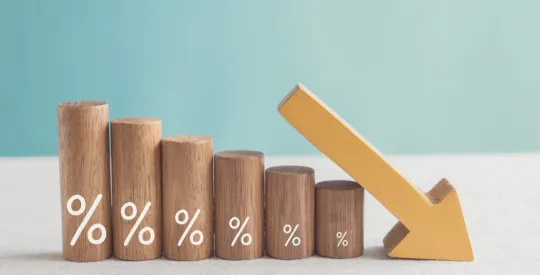The pandemic-era boom in single-family rental prices is over, according to CoreLogic‘s Single-Family Rent Index.
The index, which analyzes single-family rent price changes nationally and across major metropolitan areas, tracked 13-15% annual growth in rental prices in the first half of 2023, but the index value rose only 2.7% in November, the latest data available.
CoreLogic Principal Economist Molly Boesel told HousingWire the 2022 price boom was largely “a spillover from the for-sale market,” which has been stuck in a prolonged inventory crunch in the present high-mortgage-rate environment. That has kept multifamily and single-family renters from making the jump to home ownership, thereby keeping rental demand high.
The rental and for-sale single-family housing markets mostly move in tandem, though swings in rental prices tend to be more muted, Boesel said.
Year-over-year rent price growth nationally and in most cities is now back within the 2-4% range that persisted for about a decade pre-Covid. Some metros, including Austin and Miami, are even seeing rent prices fall on an annual basis.
Austin is a unique case, Boesel noted. The city’s average rent price rose 30% from early 2020 to mid-2023 as high-earning tech workers moved in, but tens of thousands of multifamily units have since been completed, with tens of thousands more in the pipeline. These shiny new alternatives to single-family rental units, often paired with leasing incentives like a month’s free rent, have sapped single-family demand.
As a result, Austin has experienced five consecutive months of single-family rent price annual declines. While that is an unwelcome trend for Austin’s single-family property managers, the city’s average rent price was still 23% higher in November than it was in February 2020, Boesel noted.
For Boesel, Austin is a unique case that is not indicative of national trends. She expects rental prices nationally to continue to grow 2-4% per year in the near term.
Nationally, multifamily construction has grown at a faster rate than single-family construction. That helps explain why single-family rents are no longer growing at 13-15%, but is not a cause for concern that cities across the country are about to resemble Austin’s market, Boesel believes.
Multifamily completions in December were 47% higher than the 2019 average, according to the latest data available from the U.S. Census Bureau and the Department of Housing and Urban Development. Single-family completions, by contrast, were 17% higher than the 2019 average.
However, single-family builders have continued to start and authorize more units, while multifamily builders have stepped on the brakes. Multifamily permits in December were 8% below the 2019 average, while single-family permits were 16% above the 2019 average.
In addition to multifamily and single-family completions, an increase in homes listed for sale should mute rent price growth and keep it within the 2-4% annual growth rate window, Boesel added. However, that depends in large part on how quickly and steeply mortgage rates fall. Boesel doesn’t anticipate a significant increase in inventories until mortgage rates – currently around 6.7% – reach 5.5%.



